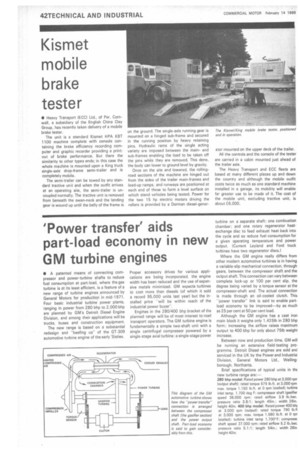Kismet mobile brake tester
Page 44

If you've noticed an error in this article please click here to report it so we can fix it.
• Heavy Transport (ECC) Ltd., of Par, Cornwall, a subsidiary of the English China Clay Group, has recently taken delivery of a mobile brake tester.
The unit is a standard Kismet 1-IPA KBT 1100 machine complete with console containing the brake efficiency recording computer and graphic recorder providing a printout of brake performance. But there the similarity to other types ends: in this case the whole machine is mounted upon a King truck single-axle drop-frame semi-trailer and is completely mobile.
The semi-trailer can be towed by any standard tractive unit and when the outfit arrives at an operating site, the semi-trailer is uncoupled normally. The tractive unit is removed from beneath the swan-neck and the landing gear is wound up until the belly of the frame is on the ground. The single-axle running gear is mounted on a hinged sub-frame and secured in the running position by heavy retaining pins. Hydraulic rams of the single acting variety are imposed between the mainand sub-frames enabling the load to be taken off the pins while they are removed. This done, the body can lower to ground level by gravity.
Once on the site and lowered, the rollingroad sections of the machine are hinged out from the sides of the trailer main-frames and lead-up ramps, and runways are positioned at each end of these to form a level surface on which stand vehicles being tested. Power for the two 15 hp electric motors driving the rollers is provided by a Dorman diesel-gener ator mounted on the upper deck of the trailer.
All the controls and the console of the tester are carried in a cabin mounted just ahead of the trailer axle.
The Heavy Transport and ECC fleets are based at many different places up and down the country and although the mobile outfit costs twice as much as one standard machine installed in a garage, its mobility will enable far greater use to be made of it. The cost of the mobile unit, excluding tractive unit, is about £6,000.


















































































































